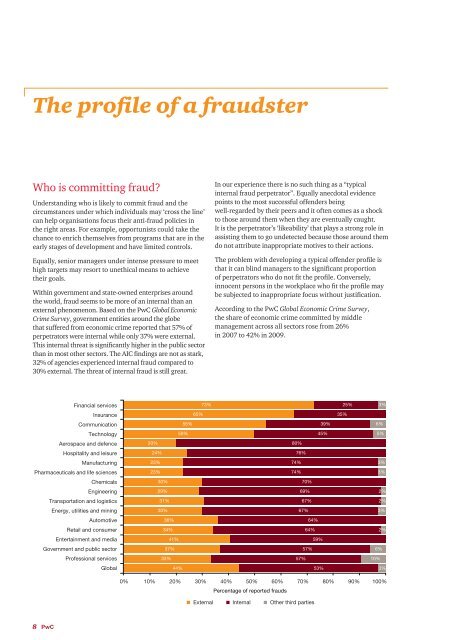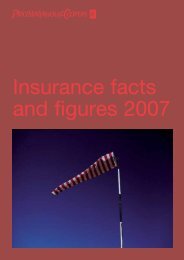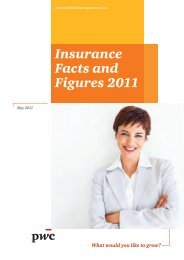Controlling fraud in the public sector - PricewaterhouseCoopers
Controlling fraud in the public sector - PricewaterhouseCoopers
Controlling fraud in the public sector - PricewaterhouseCoopers
Create successful ePaper yourself
Turn your PDF publications into a flip-book with our unique Google optimized e-Paper software.
The profile of a <strong>fraud</strong>ster<br />
Who is committ<strong>in</strong>g <strong>fraud</strong>?<br />
Understand<strong>in</strong>g who is likely to commit <strong>fraud</strong> and <strong>the</strong><br />
circumstances under which <strong>in</strong>dividuals may ‘cross <strong>the</strong> l<strong>in</strong>e’<br />
can help organisations focus <strong>the</strong>ir anti-<strong>fraud</strong> policies <strong>in</strong><br />
<strong>the</strong> right areas. For example, opportunists could take <strong>the</strong><br />
chance to enrich <strong>the</strong>mselves from programs that are <strong>in</strong> <strong>the</strong><br />
early stages of development and have limited controls.<br />
Equally, senior managers under <strong>in</strong>tense pressure to meet<br />
high targets may resort to unethical means to achieve<br />
<strong>the</strong>ir goals.<br />
With<strong>in</strong> government and state-owned enterprises around<br />
<strong>the</strong> world, <strong>fraud</strong> seems to be more of an <strong>in</strong>ternal than an<br />
external phenomenon. Based on <strong>the</strong> PwC Global Economic<br />
Crime Survey, government entities around <strong>the</strong> globe<br />
that suffered from economic crime reported that 57% of<br />
perpetrators were <strong>in</strong>ternal while only 37% were external.<br />
This <strong>in</strong>ternal threat is significantly higher <strong>in</strong> <strong>the</strong> <strong>public</strong> <strong>sector</strong><br />
than <strong>in</strong> most o<strong>the</strong>r <strong>sector</strong>s. The AIC f<strong>in</strong>d<strong>in</strong>gs are not as stark,<br />
32% of agencies experienced <strong>in</strong>ternal <strong>fraud</strong> compared to<br />
30% external. The threat of <strong>in</strong>ternal <strong>fraud</strong> is still great.<br />
In our experience <strong>the</strong>re is no such th<strong>in</strong>g as a “typical<br />
<strong>in</strong>ternal <strong>fraud</strong> perpetrator”. Equally anecdotal evidence<br />
po<strong>in</strong>ts to <strong>the</strong> most successful offenders be<strong>in</strong>g<br />
well-regarded by <strong>the</strong>ir peers and it often comes as a shock<br />
to those around <strong>the</strong>m when <strong>the</strong>y are eventually caught.<br />
It is <strong>the</strong> perpetrator’s ‘likeability’ that plays a strong role <strong>in</strong><br />
assist<strong>in</strong>g <strong>the</strong>m to go undetected because those around <strong>the</strong>m<br />
do not attribute <strong>in</strong>appropriate motives to <strong>the</strong>ir actions.<br />
The problem with develop<strong>in</strong>g a typical offender profile is<br />
that it can bl<strong>in</strong>d managers to <strong>the</strong> significant proportion<br />
of perpetrators who do not fit <strong>the</strong> profile. Conversely,<br />
<strong>in</strong>nocent persons <strong>in</strong> <strong>the</strong> workplace who fit <strong>the</strong> profile may<br />
be subjected to <strong>in</strong>appropriate focus without justification.<br />
Accord<strong>in</strong>g to <strong>the</strong> PwC Global Economic Crime Survey,<br />
<strong>the</strong> share of economic crime committed by middle<br />
management across all <strong>sector</strong>s rose from 26%<br />
<strong>in</strong> 2007 to 42% <strong>in</strong> 2009.<br />
F<strong>in</strong>ancial services<br />
Insurance<br />
Communication<br />
Technology<br />
Aerospace and defence<br />
Hospitality and leisure<br />
Manufactur<strong>in</strong>g<br />
Pharmaceuticals and life sciences<br />
Chemicals<br />
Eng<strong>in</strong>eer<strong>in</strong>g<br />
Transportation and logistics<br />
Energy, utilities and m<strong>in</strong><strong>in</strong>g<br />
Automotive<br />
Retail and consumer<br />
Enterta<strong>in</strong>ment and media<br />
Government and <strong>public</strong> <strong>sector</strong><br />
Professional services<br />
Global<br />
73% 25% 3%<br />
65% 35%<br />
55% 39% 6%<br />
50% 45% 5%<br />
20% 80%<br />
24% 76%<br />
23% 74% 3%<br />
23% 74% 3%<br />
30% 70%<br />
29% 69% 2%<br />
31% 67% 2%<br />
30% 67% 3%<br />
36% 64%<br />
34% 64% 2%<br />
41% 59%<br />
37% 57% 6%<br />
33% 57% 10%<br />
44% 53% 3%<br />
0% 10% 20% 30% 40% 50% 60% 70% 80% 90% 100%<br />
Percentage of reported <strong>fraud</strong>s<br />
External Internal O<strong>the</strong>r third parties<br />
8 PwC
















